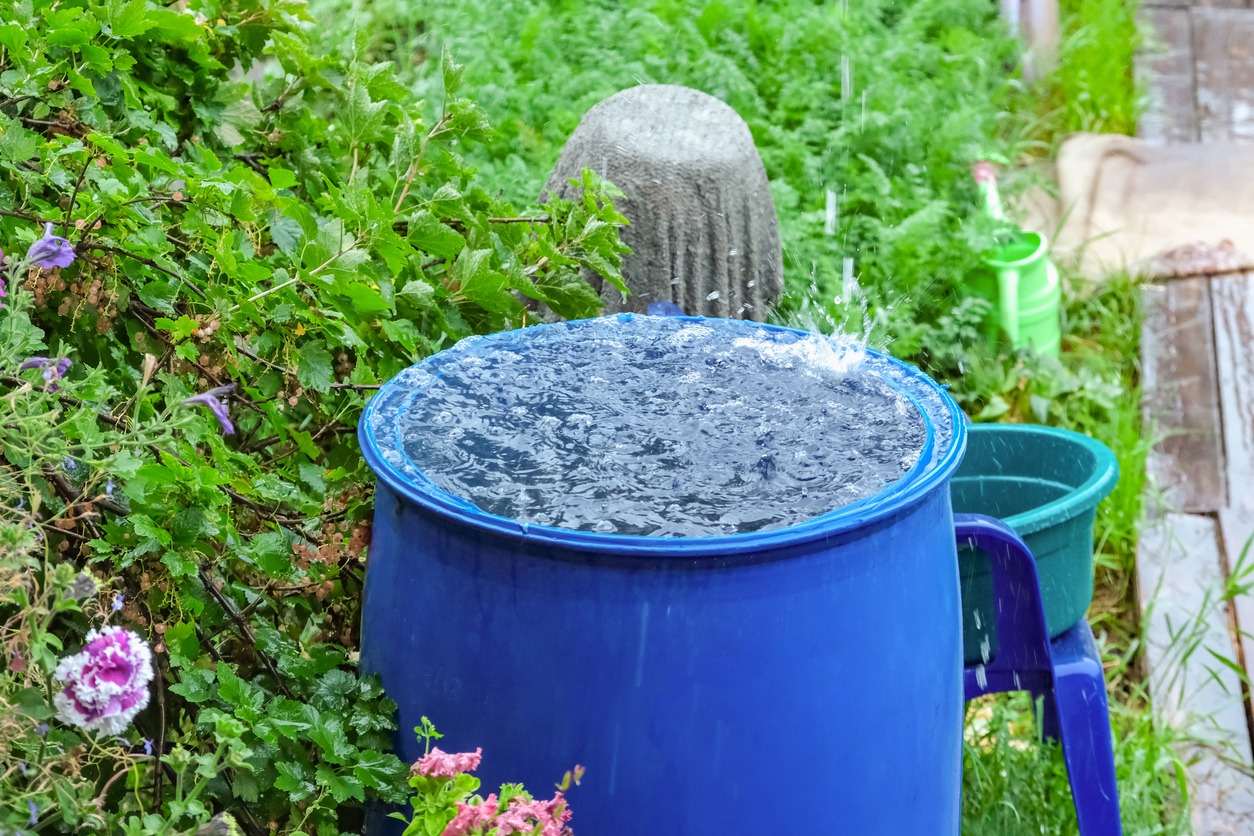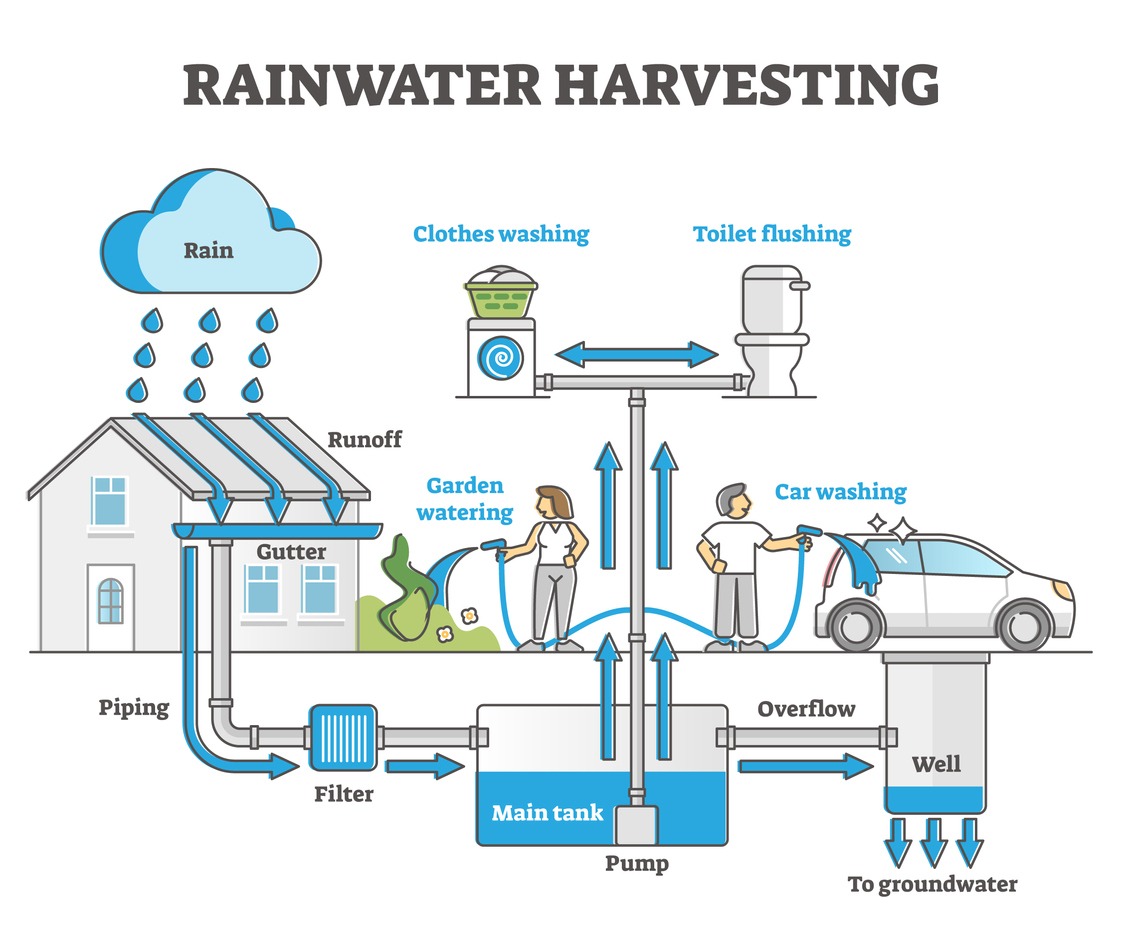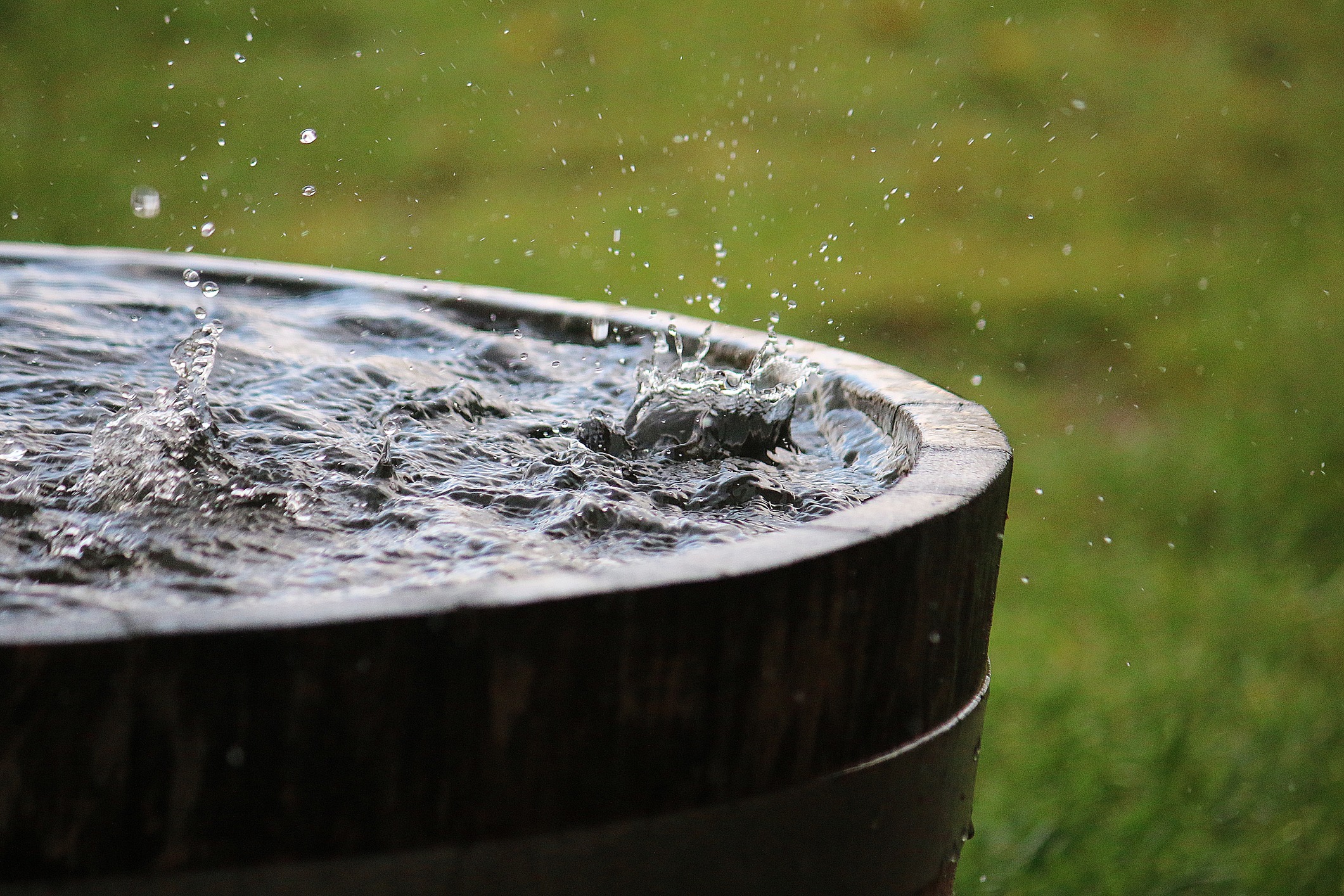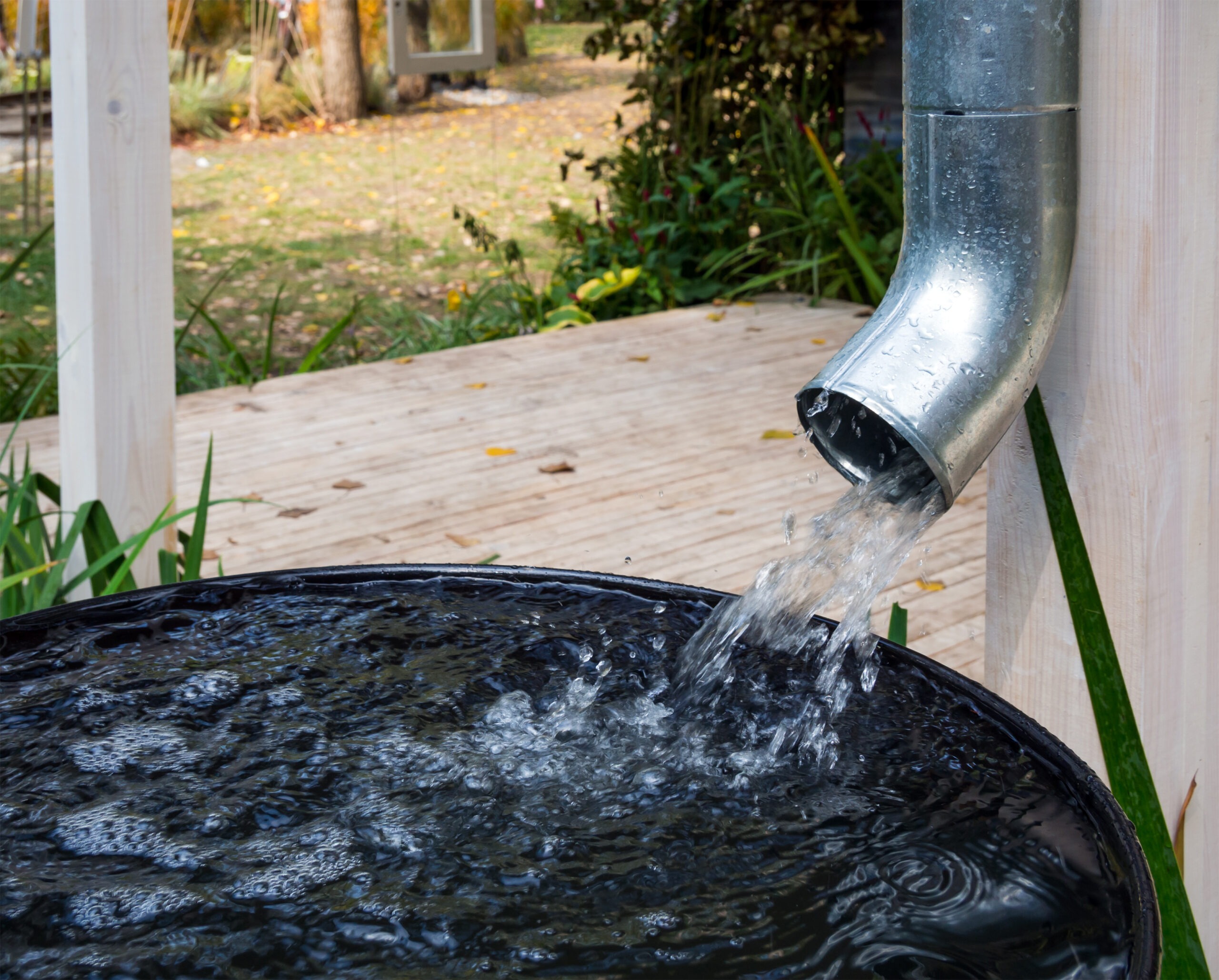Rainwater harvesting is an essential component of any off-grid community’s plan to achieve self-sufficiency in this day and age when environmental awareness and eco-friendly ways of life have assumed an increasingly central role. Living off the grid, which is characterized by a deliberate disconnection from public utilities, necessitates the development of innovative strategies to secure necessary resources. The practice of collecting rainwater, which dates back hundreds of years, has recently seen a resurgence in popularity because it is an efficient, reliable, and environmentally friendly method of satisfying water requirements.
This article offers a guide to rainwater harvesting, diving into its fundamentals as well as its advantages and potential uses in off-grid settings. People and communities can significantly lessen their reliance on external water sources and make significant contributions toward a more sustainable and resilient future if they are successful in collecting, storing, and making use of rainwater.
What is Rainwater Harvesting?
Harvesting rainwater refers to the process of collecting and storing rainwater for use at a later time. The process involves directing rainwater that has been collected from surfaces such as roofs and directing it into reservoirs or storage tanks. Rainwater that has been collected and stored can be put to a variety of uses, including watering plants, flushing toilets, and even, in certain circumstances and after undergoing the necessary purification processes, being consumed as drinking water. It is an environmentally friendly method that lessens reliance on traditional sources of water and carries the potential to be especially beneficial in regions that have restricted access to clean water.
What are the Benefits of Rainwater Harvesting?
Sustainable Water Source
The collection of rainwater is an example of sustainable practices because it provides a source of water that is local, dependable, and unchanging. Regardless of the presence or absence of centralized water systems, this method ensures a consistent supply of water in areas that are not connected to a utility grid or that are experiencing a shortage of water. Rainwater harvesting is a method that reduces the need to draw water from reserves that are further away or already at capacity by utilizing the natural water cycle. This, in turn, reduces the strain placed on ecosystems and helps to preserve water for use by subsequent generations.
Cost-Efficiency
The initial investment in rainwater harvesting systems might appear to be substantial; however, the long-term cost savings are incontestable. After installation, these systems run automatically and do not require any additional sources of energy to keep them going. This results in lower water bills and a significant reduction in the costs associated with drilling wells or constructing infrastructure for water supply. Rainwater collection is an option that both individual households and entire communities should consider adopting because, over time, it generates a return on investment that justifies its cost.
Reduced Dependency on Fossil Fuels:
Rainwater harvesting is a water supply method that has a low environmental impact and does not require any additional energy to operate. It does not require the use of fossil fuels or electricity in any of its processes, including extraction, treatment, or distribution. Rainwater collection is an example of an environmentally responsible alternative in a world that is working toward sustainability and reducing its carbon footprint. It contributes to the global effort to mitigate the effects of climate change and transition towards cleaner, renewable resources by reducing reliance on energy-intensive processes and thereby reducing energy consumption overall.
Reduces the Effect of Drought
In parts of the world that are prone to dry spells, collecting rainwater can be a literal lifesaver during those particularly dry stretches. Capturing and storing rainwater when there is an abundance of it allows communities to build up an essential reserve that can be used during times of low rainfall. This strategic approach helps safeguard essential water needs, including drinking and sanitation water as well as irrigation water for agricultural purposes. It acts as a buffer against the debilitating effects of drought, ensuring that communities can weather the challenges that are posed by changing climate patterns.
Conservation of Groundwater
Groundwater is the primary source of potable water in many areas that are not connected to public water systems. However, excessive extraction can have negative effects on the surrounding environment, including the sinking of land and the spread of contamination. The collection of rainwater presents a potential solution because it can lessen their reliance on groundwater, which in turn enables aquifers to naturally recharge. In doing so, it plays an essential part in the preservation of this priceless resource for future generations, thereby protecting the delicate balance of underground ecosystems.
Environmental Benefits
The collection of rainwater is an effective strategy that can be utilized in the battle against the degradation of the environment. It does this by collecting rainwater, which reduces surface runoff, which is a process that is notorious for carrying pollutants into rivers, streams, and other sensitive aquatic habitats. In turn, this contributes to the preservation and restoration of the ecosystems in the surrounding area. Rainwater harvesting helps to create natural environments that are healthier and more resilient by lowering the number of contaminants that are present in those environments. This has positive effects not only on wildlife but also on the human communities that live in those environments.
Planning Your Rainwater Harvesting System
Proper planning is essential to guarantee the efficacy and efficiency of your rainwater harvesting system. Listed below is a thorough how-to guide:
Assess Water Needs
It is essential that you have a solid understanding of your water needs before beginning the design process for your rainwater harvesting system. Think about your needs now as well as your needs in the future. This includes the use of your home for things like irrigation and anything else. This evaluation will serve as a guide for determining the size and capacity of your system.
Determine Catchment Area
Determine the areas that will serve as collection points for the rainwater. This most commonly refers to rooftops, but it can also refer to other impermeable surfaces such as driveways or patios. It is important to determine the total square footage of your catchment area, as this will have a direct impact on the volume of water you can collect.
Select Storage Containers
Do some research on the local rain patterns to get an idea of how much rainwater you can anticipate collecting over some time. Using this information, you will be able to calculate the required amount of storage space for your system.
Estimate Rainfall Patterns
decide on the strategies you’ll employ to gather rainwater. This may involve installing gutters and downspouts to channel water away from the catchment area and into a storage container.
Choose Collection Methods
Determine how much water you will need and choose the appropriate containers for storage based on the amount of space you have. There are many different options available, ranging from straightforward barrels or tanks to more complex underground cisterns or larger above-ground tanks.
Incorporate Filtration and Screening
Installing filters or screens can help remove debris, leaves, and other contaminants from the water, thereby ensuring that the water is clean and suitable for consumption. This step is necessary to preserve the quality of the water.
Plan for Overflow and Diversion
Think about what will take place when the capacity of your storage tanks is reached. Install overflow systems to prevent flooding and direct excess water to appropriate areas, such as a garden or a stormwater drain. These systems should be installed as soon as possible.
Include First Flush Diverter
A first flush diverter is a mechanism that diverts the initial flow of rainwater, which may contain more contaminants from the catchment surface, before sending cleaner water into the storage tank. This ensures that the water being stored is as clean as possible.
Incorporate a Pumping System
You might require a pump to transport rainwater to various locations, depending on the design of your system and what you plan to do with the collected water after it has been harvested.
Plant for Treatment
If you intend to use the collected rainwater for consumable purposes, you should seriously consider installing a treatment system to bring the water up to the standards required for drinking water.
Consider Legal and Regulatory Requirements
It is important to check the local regulations and building codes to ensure that you comply with any requirements that are associated with the collection of rainwater.
Regular Maintenance and Monitoring
Create a schedule that you will follow regularly to inspect and maintain your rainwater harvesting system. This includes ensuring that all components are functioning correctly, checking for leaks, and cleaning any filters that need to be cleaned.
Evaluate System Performance
Monitor the performance of your system consistently to ensure that it is meeting your requirements for water. Because of things like shifting weather patterns and rising water consumption, some adjustments may be required.
You will be able to maximize the effectiveness of your rainwater harvesting system, as well as its longevity and contribution to sustainable water management if you plan it out carefully. This methodical approach ensures that you make the most of this valuable resource while minimizing any potential negative impact it may have on the surrounding environment.
What are the Components of a Rainwater Harvesting System?
Rainwater can be collected, stored, and put to good use with the help of a rainwater harvesting system, which consists of several key components that cooperate. An overview of the primary components is as follows:
Catchment Area
When referring to a rainwater harvesting system, the surface or area from which rainwater is collected and channeled towards a storage system is referred to as a catchment area. It is a surface that collects rainwater and can be any horizontal or slightly angled surface, such as a roof, terrace, or any other impermeable area. Roofs and terraces are common examples of this type of surface.
Rainwater can easily flow into gutters or channels because the catchment area is typically constructed out of water-resistant materials such as metal, concrete, asphalt, or other similar materials. The water is then channeled into downspouts or pipes that ultimately lead to a storage tank or reservoir from this point.
When planning the construction of an efficient rainwater collection system, it is essential to take into account important aspects such as the catchment area’s dimensions and composition. It needs to be big enough to collect a sufficient amount of rainwater, and the material needs to be pristine and free of any contaminants to guarantee that the water that is collected is of high quality. It is essential to perform routine maintenance on the catchment area to avoid the accumulation of debris, which has the potential to lower the quality of the rainwater that is collected.
Conveyance System
The conveyance system within a rainwater harvesting system refers to a set of infrastructure and various components responsible for transporting accumulated rainwater from the catchment area to the designated storage or utilization location. The system comprises various components such as gutters, downspouts, pipes, and channels, which are designed to facilitate the effective conveyance and utilization of rainwater.
Storage Tanks
Rainwater harvesting systems typically include storage tanks, which are containers that are designed to hold collected rainwater for later use. Depending on the particular needs of the system and the amount of space that is readily available, they are available in a wide variety of configurations, sizes, and materials. The storage of water, the control of its flow, and, in some cases, the provision of pressure for distribution are the primary functions of the tanks in question.
Filtration and Treatment
Filtration is the process of removing physical impurities and particles from collected rainwater in a rainwater harvesting system. These impurities and particles include debris, sediment, leaves, and other solid materials. Filtration is also referred to as filtration. Rainwater that has been collected is subjected to treatment, which may involve processes such as disinfection or chemical treatment, to bring the water’s quality to a level that makes it suitable for a variety of applications.
Conclusion
The collection and storage of rainwater is an essential component of sustainable off-grid living. Communities are given the ability to meet their water requirements through the utilization of a resource that is easily accessible. This self-sufficiency lessens reliance on centralized water systems and increases opportunities for the conservation of natural resources. Rainwater that has been collected can be used for a variety of purposes, including irrigation and even human consumption, provided that it has been properly filtered and treated. Rainwater collection emerges as an essential practice in this framework as a crucial component in the development of resilient and sustainable off-grid living.



